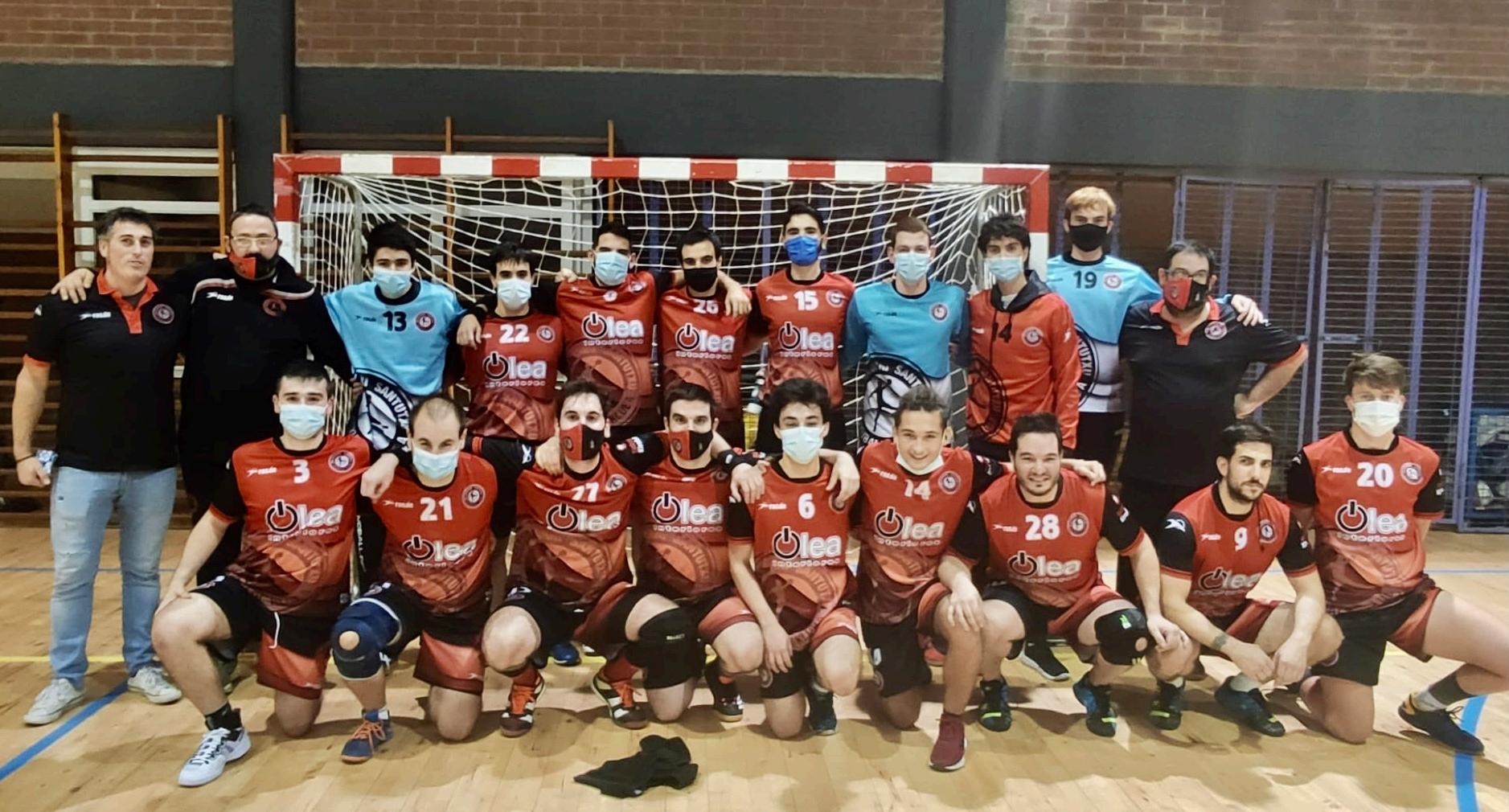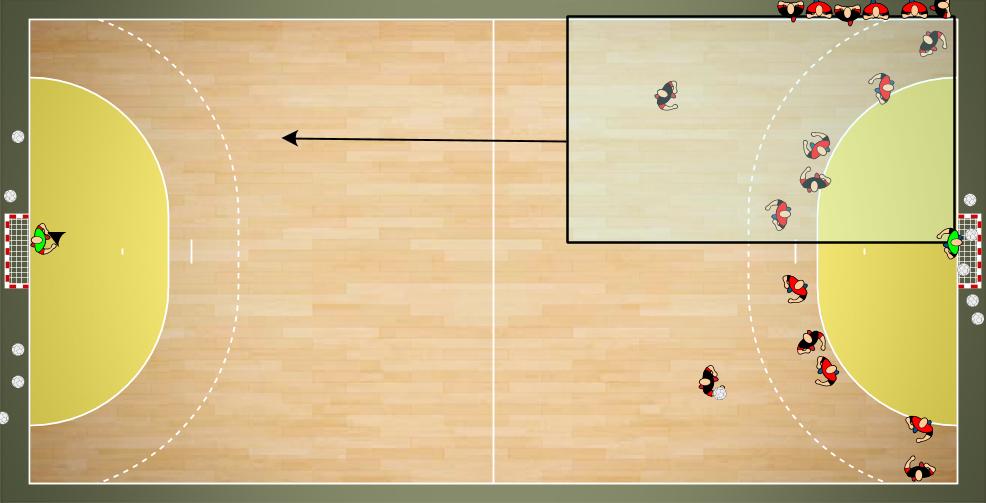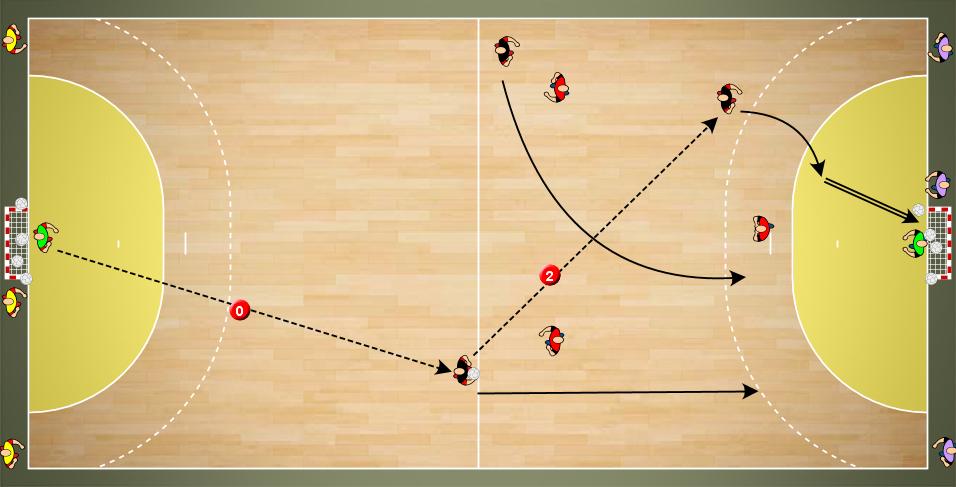
7 minute read
JUAN PABLO MORILLO
• National women's national beach handball coach. • PhD in Sport Psychology from the University of Malaga, Degrees in Teaching and Physical Activity and Sport Sciences, Master's
Degree in Physical Activity and Sport Research. • National handball coach, he is responsible for beach handball training at the National School of Coaches of the Royal Spanish
Advertisement
Handball Federation. • He works as a teacher of Physical Education and as a teacher in the Master in Research in Physical Activity and Sport at the
University of Malaga.
The rules of the game, which give each team a range of changes, allow for a high degree of specialisaNon of players in acack and defence, a circumstance that enables more direct counteracacks and which coaches use to respond to the principle of economy of effort. This specialisaNon in offensive and defensive players manifests itself in certain specific posiNons, such as the pivot or the specialist.
On the other hand, it is common to find a parallelism between the specific posiNons of handball players and the specific posiNons of beach handball in grassroots teams. This is especially noNceable in those teams that are parNcipaNng for the first Nme and that have hardly had any previous training in this modality.
Fortunately, the exponenNal increase in interest in beach handball training has resulted in the numerous training courses that are being carried out, which will allow for an improvement in the quality of training, providing coaches with the appropriate knowledge and resources to work with grassroots teams.
Specifically, the main objecNve of the work of the specific posiNons in the training stages is to avoid early specialisaNon. Lack of training sessions, extrapolaNng specific posiNons from handball to beach handball or copying and reproducing training sessions from senior teams to grassroots teams are mistakes that need to be corrected to allow for the proper development of the younger players. Not giving them the opportunity to explore other specific posiNons has a negaNve impact on their technical-tacNcal, psychomotor and physical condiNon.
In this brief document, I propose a systemaNc set of 10 exercises that address these issues, providing coaches with a valid resource for working with the grassroots in relaNon to this major objecNve.
The common characterisNcs of this set of exercises are:
• They link the phases of play, without carrying out defence-acack changes. • They respect the asymmetry of players, a fundamental characterisNc of the development of the game. • They make it possible to improve psychomotor and physical condiNon. • They allow a wide range of variants depending on the objecNve.
The dynamics of development common to all of them is to carry out the activity in pairs, trios or small groups in which they take turns to perform the activity. The rest time can be active and, of course, in the following interventions they must change specific positions. Each exercise is a proposal for the beginning of individual technical-tactical work, on which the offensive and defensive systems of play will be worked on progressively, according to the level and category of the group.
In the description of the exercises it is not specified, but it is important to consider all the possibilities and alternatives of positions for each player, even if they are not the most common; for example, just as the specialist player can be left-footed, we must consider the possibility of the left- or right-handed pivot positioned in his weak point.
Obviously, there are many alternatives, showing in these exercises a basic proposal on which each coach can work according to his own objectives and conditioning factors.






Finally, I would like to encourage coaches to design their own training exercises with the aim of being able to adapt them in the best way possible to the reality of the team they are training, analysing proposals such as the ones I present in a critical manner in order to obtain the greatest benefit from them. I also encourage them to share their experiences and proposals, as a modality as young as ours is growing every day and has many facets to explore.







ANTONIO AHEDO FERNÁNDEZ
COACH OF BELTZGORRI SANTUXTU E.K. SENIOR MEN'S TERRITORIAL CATEGORY MALE CADET CATEGORY CADET MALE NATIONAL TEAM BIZKAIA (BILBAO-BIZKAIA)



OBJECTIVES
Physical
background. Decision making. Reaction speed.
COACH FEEDBACK
Do not use bounces Do not finish by jumping against goalkeeper Goalkeeper, tense and forward pass.
VARIANTS
We can work 3x2, we would use two pairs with the ball.
DESCRIPTION.
We will work with two rows of players in the end zone and a pair of players wrestling with a ball for 6 metres. We will place each row with different coloured bibs and the pair that fights with one of each colour.
We will place two sets at 15m in the end lane and two cones in the centre of the field at about s 7m from each side. On command, one player from each corner will go out, the goalkeeper will pass to the player who first passes through his door and we will work 1x1. Afer the 1x1 shooNng acNon, the pair that struggled with the ball and the player who did not shoot the 1x1, the players of the same colour acack the other defends and work a 2x1, afer passing behind the cones in the middle of the field.


This is the previous one but with a full field and with the supports coming from the centre.




DESCRIPTION
We work with two goalkeepers and 3 groups of 6 players (2 groups on the field and one on the wing). We work on one side of the pitch in a 3x3, with a winger and a pivot, with at least 5 passes to finish. At the end of the play, the other group of 6 players goes out to counter-attack or counter-goal (they receive a pass from the goalkeeper) and the group on the wing takes their place and starts a 3x3 with a pass from the goalkeeper on the opposite side of the pitch. Rotation. The group that counter-attacks, passes to the wing, the group that enters from the wing plays the 3x3, the remaining group goes out to counter-attack.
OBJECTIVES
Reaction speed, decision making, speed in transition defence attack.
FEEDBACK COACH.
IniNate the counter-acack when the player from the other group iniNates the shooNng acNon. Do not bring acackers up on the same line. Goalkeeper, tense and forward pass.


DESCRIPTION
We play a 3x3 all over the field.
We divide players into four teams of 3, two in play and the others, each behind a back line. At the end of the attack, the defending team goes on counter-attack and the team behind the back line defends.
OBJECTIVES
Quick change of role. Physical background.
COACH FEEDBACK
Do not bring the attackers up on the same line. Goalkeeper, tense and forward pass. Do not use bounce Occupy the space left by my teammate
VARIANTS
Reducing the space We can work 4x3 (we work with a player on the wing who only enters in acacking situaNons).








